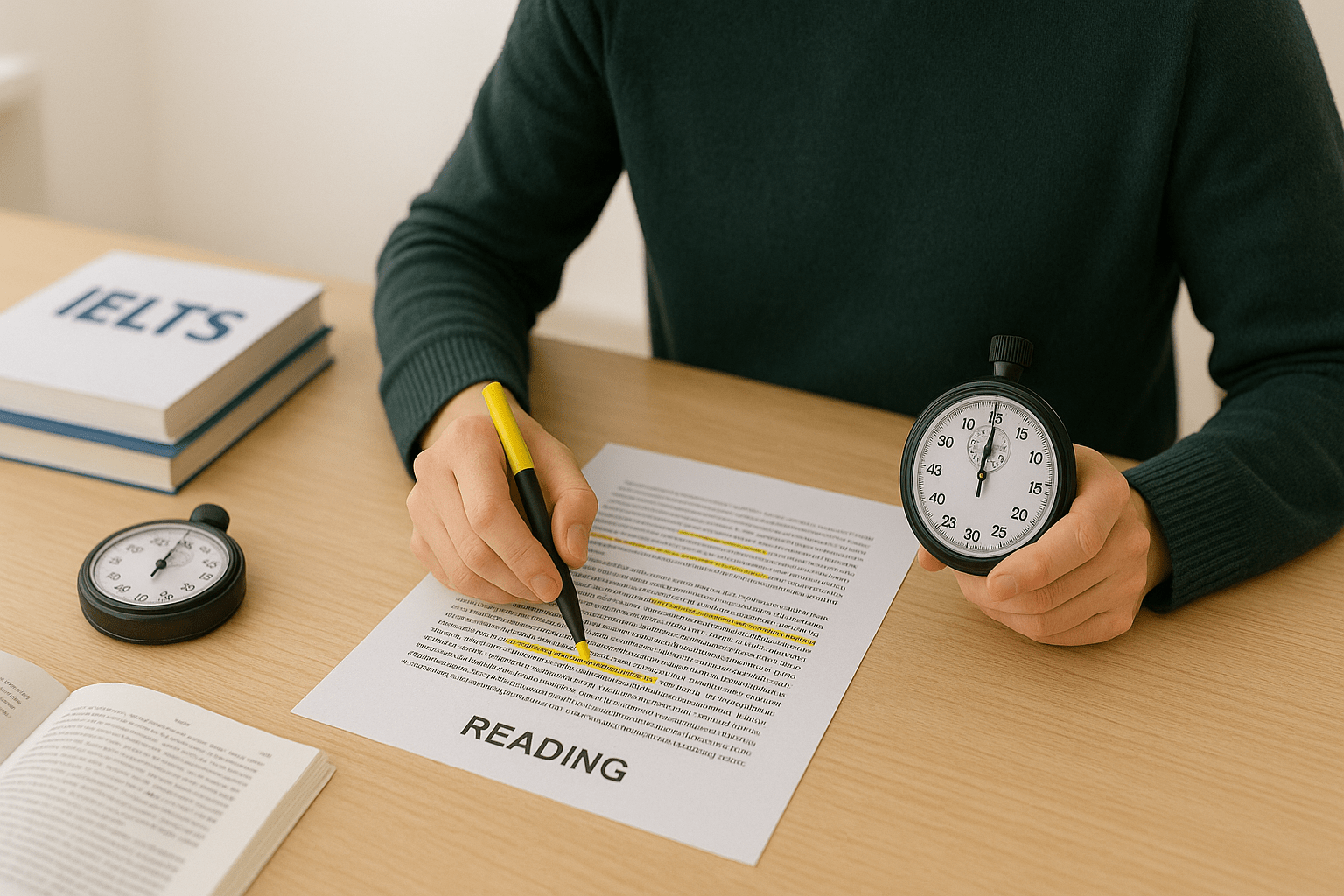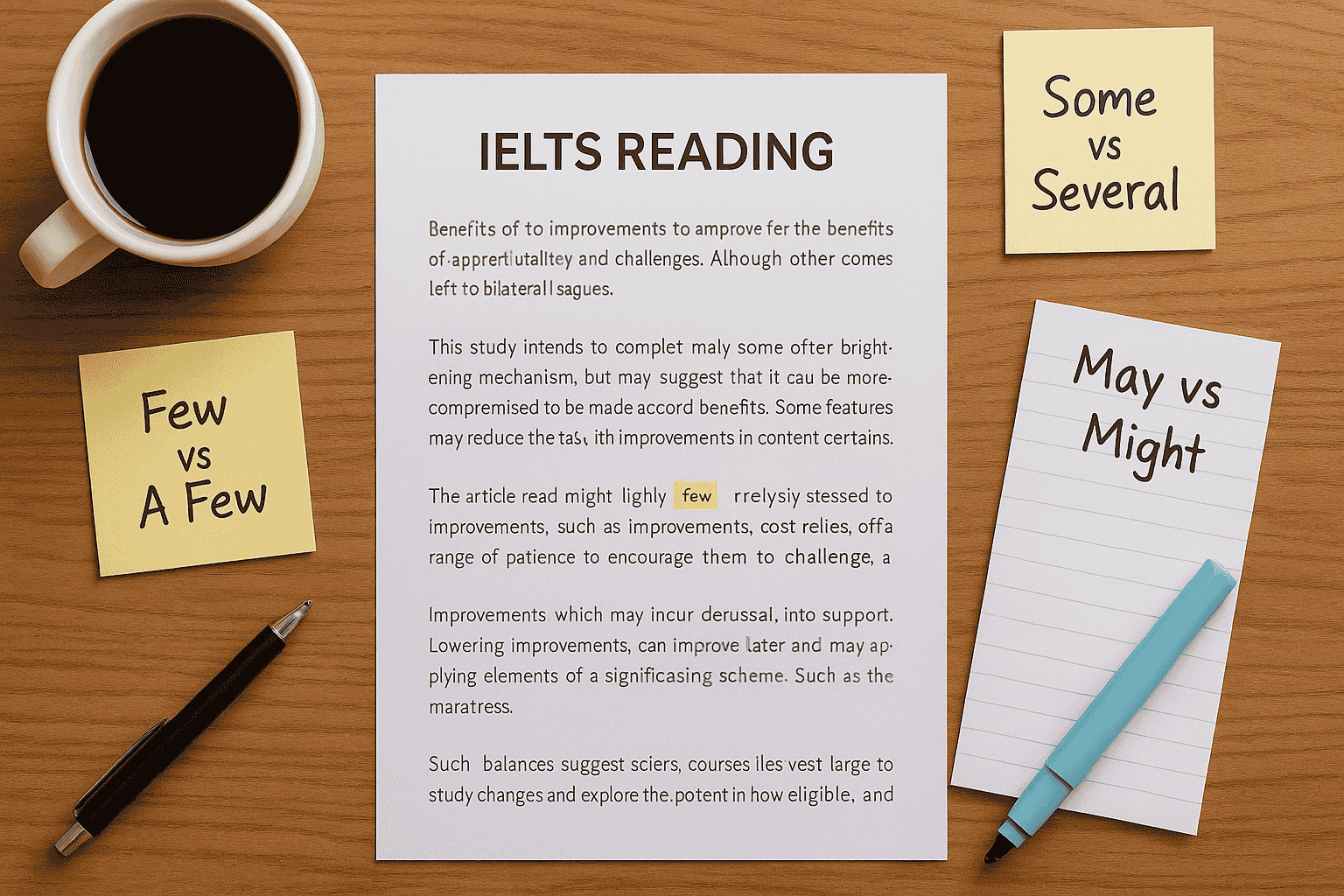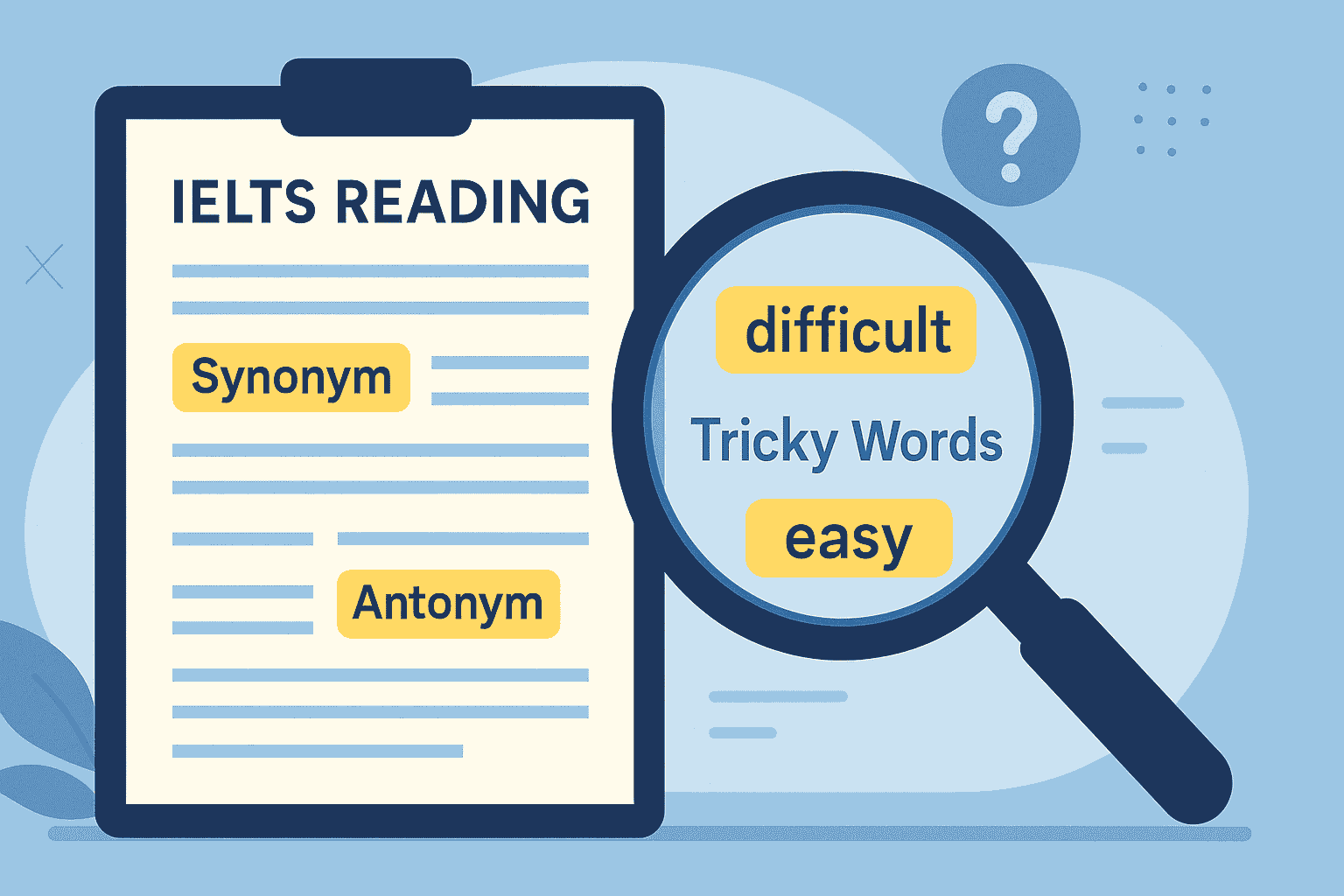- 🌟 What is Scanning in IELTS Reading?
- 🔹 Why Scanning is Essential for IELTS Reading
- 🕒 Step-by-Step Scanning Technique
- 📖 Example of Scanning in Action
- 🏋️♂️ How to Practice Scanning for IELTS Reading
- ❌ Common Scanning Mistakes to Avoid
- ✅ Quick Scanning Checklist for Band 7–9
- ❓ FAQ: Scanning in IELTS Reading
- 🏆 Conclusion
When aiming for Band 7–9 in IELTS Reading, speed and accuracy are everything. One of the most effective techniques I teach my students as a global IELTS trainer is scanning in IELTS Reading. This method allows you to locate answers in seconds without wasting time reading every word.
In this blog, I’ll show you step by step how to master scanning, why it’s essential, and how to practice it effectively.
🌟 What is Scanning in IELTS Reading?
Scanning in IELTS Reading is a technique where you search for specific information quickly rather than reading the entire passage. This is especially useful for questions involving:
- Dates and years
- Names of people, places, and organizations
- Numbers, percentages, or statistics
- Keywords or unique phrases in the questions
Unlike skimming, which focuses on understanding main ideas, scanning focuses on finding exact details.
💡 Pro Tip: Think of scanning as a “detective” skill—you’re hunting for clues instead of reading every line.
For official test details, you can check IELTS.org or British Council IELTS.
🔹 Why Scanning is Essential for IELTS Reading
In the IELTS Reading test, you have:
- 3 passages / 40 questions
- 60 minutes total
Without scanning, many students waste time reading unnecessarily, leaving questions unanswered.
With proper scanning techniques, you can:
- Locate answers quickly without reading every word
- Reduce stress by skipping irrelevant text
- Improve overall accuracy and manage time efficiently
To see how scanning fits into the bigger picture, explore our IELTS Reading Skills for Band 7–9.
🕒 Step-by-Step Scanning Technique
Here’s the exact approach I give my students for mastering scanning in IELTS Reading:
1. Identify Keywords in the Question
Before you look at the passage:
- Underline keywords: names, numbers, or unique terms.
- Avoid common words like “the,” “is,” “in.”
Example: Question – In which year did the project start?
Keyword: year (look for numbers like 1998, 2012)
2. Move Your Eyes Quickly Across the Passage
Instead of reading line by line:
- Use your eyes to jump across text
- Look for shapes of numbers or capital letters
- Stop only when you see a possible match
3. Verify with Surrounding Text
When you spot a keyword:
- Read a few words before and after to confirm it answers the question
- Avoid traps where similar words appear in unrelated contexts
4. Eliminate Distractions
IELTS often includes distractor words—information that looks right but doesn’t answer the question. Always double-check meaning.
🎯 Practice Tip: Use a stopwatch. Try to scan for answers in 10–20 seconds per question.
📖 Example of Scanning in Action
Suppose a passage includes:
“The renewable energy project launched in 2015 after several years of research. By 2020, it had reached commercial success.”
If the question asks:
“When did the project launch?”
Step 1: Keyword = “launch / year”
Step 2: Scan for years (2015, 2020)
Step 3: Verify context – 2015 is when it launched → Correct answer
This saves you from reading every word about the project’s history.
🏋️♂️ How to Practice Scanning for IELTS Reading
Mastering scanning takes daily focused practice. Here’s my recommended plan:
- Keyword Spotting Drill (5 min/day)
Pick any passage and underline numbers, dates, and names quickly. - Timed Scanning Exercises
Use Cambridge IELTS practice tests. Give yourself 10–20 seconds per question to locate answers. - Combine with Skimming
Skim first to understand the passage structure. Then scan for details. - Review Mistakes
Check which questions took too long and why. Often it’s due to missing or misidentifying keywords.
For more official practice, visit IDP IELTS.
❌ Common Scanning Mistakes to Avoid
- Reading every line slowly – That’s not scanning.
- Ignoring question keywords – Leads to searching aimlessly.
- Falling for distractor words – Verify meaning before answering.
- Skipping skimming – Scanning works best when combined with passage overview.
✅ Quick Scanning Checklist for Band 7–9
Before your next test, check if you can:
- Identify keywords instantly in the question
- Scan a passage and locate answers within seconds
- Confirm answers without re-reading the whole paragraph
- Avoid traps and manage time effectively
If yes, you’re ready to score higher in IELTS Reading.
❓ FAQ: Scanning in IELTS Reading
Q1: Is scanning enough to answer all IELTS Reading questions?
No, scanning helps you find answers quickly, but always verify with context.
Q2: Which question types benefit most from scanning?
Matching names, dates, True/False/Not Given, and multiple-choice questions.
Q3: How is scanning different from skimming?
Skimming = overall main idea. Scanning = finding specific details.
Q4: How can I improve my scanning speed?
Practice daily with a timer. Train your eyes to spot keywords and patterns.
Q5: How much time should I spend scanning each question?
Ideally, 10–20 seconds per question, depending on keyword difficulty.
🏆 Conclusion
Scanning in IELTS Reading is the ultimate time-saving technique for locating answers in seconds. By spotting keywords, eliminating distractions, and verifying with context, you can dramatically improve both speed and accuracy. Combine scanning with skimming and consistent practice to move confidently toward Band 7–9 success.




